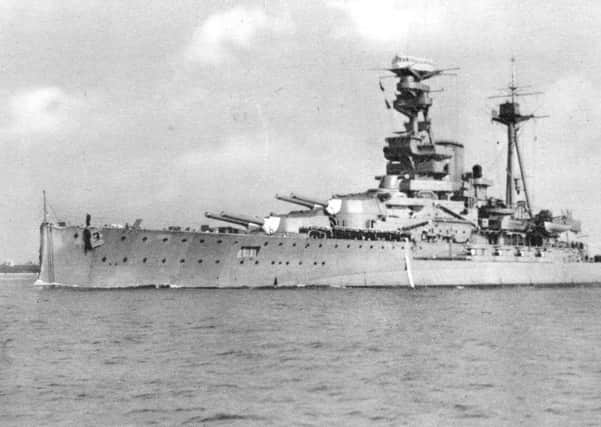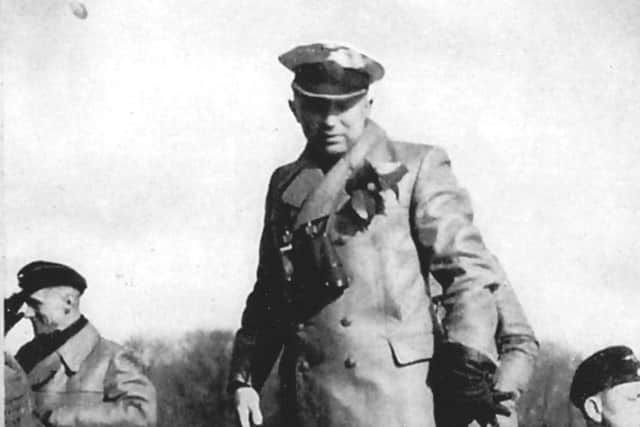How the Bull of Scapa Flow smashed Britain's '˜impregnable' sea defences


On the nights of 13 and 14 October 1939, the German U-boat U-47 penetrated the main Royal Navy base at Scapa Flow and sank the British battleship HMS Royal Oak. The legendary attack is considered as one of the most audacious raids in submarine history and made the boat’s commander, Günther Prien, a national hero in Germany. With the loss of around 835 men and boys, it remains as one of Britain’s most controversial naval tragedies.
After sinking the Royal Oak, both Prien and his famous U-boat were known thereafter as “the Bull of Scapa Flow”. He remained as commander of U-47 throughout his operational career, during which he sank a total of 30 merchant ships. As a central figure in the Battle of the Atlantic, Prien was consistently at the heart of events when the earliest wolfpacks were mauling convoys in the first 18 months of the war. His triumphs met an abrupt end in March 1941, when he and his U-boat were lost during the tenth operational patrol.


Advertisement
Hide AdThe attack on the Royal Oak began on the evening of 13 October when U-47 approached Scapa Flow from the east. The main base for Britain’s Home Fleet was assumed to be impenetrable but an analysis by German naval planners had correctly determined this to be a fallacy. In the eastern channels a number of blockships – weighted vessels deliberately sunk and held in place with thick cables anchored to shore – were supposed to prevent access into the harbour by enemy vessels. However, Luftwaffe reconnaissance photographs had revealed there to be gaps, most noticeably in Kirk Sound. Careful timing was necessary to negotiate the very strong tidal current but Prien arrived at the blockships later than the optimal time. As a consequence he had to deal with a following tide rather than an opposing tide. This tidal current pushed the stern of the little U-boat into a blockship anchor chain, requiring rapid and skilful manoeuvring by the crew to avoid the enterprise ending there and then in inglorious failure.
Now that they had successfully gained access, U-47 sailed stealthily into the southern end of the anchorage. At no point did they submerge, preferring to remain on the surface throughout the entire operation. The submariners were searching intently through their binoculars but to their growing disappointment they could not spot any large targets. In fact, with the exception of the Royal Oak, all the capital ships of the Home Fleet were presently safely housed within Rosyth and Loch Ewe. What the U-boat men did observe was a vessel patrolling at the Sound of Hoxa, whereupon they reversed their course so that they would remain undetected.
Sailing back to the south-east of the Flow, Prien began to creep northwards up the coastline towards the north-eastern corner. Luftwaffe reconnaissance photographs had revealed that capital ships often moored in this area. Sure enough, in the moonless night and with the Northern Lights periodically present, they began to spot the outline of a battleship: HMS Royal Oak. Kapitänleutnant Prien and his officers then made a very significant error when they somehow became convinced that the 794-feet long battlecruiser HMS Repulse lay just beyond the Royal Oak. The Repulse had previously been in this location, as per the Luftwaffe photographs, but had vacated the Flow only seven hours previously. In fact the only ship to the north was the ungainly 332-feet long seaplane carrier HMS Pegasus but this vessel was moored much farther to the north near Scapa Bay. A great many controversies would follow in the years to come but the Repulse – the so-called “Phantom of Scapa Flow” - is certainly the most contentious.
At 0100 on the morning of the 14 October 1939, three torpedoes were fired towards the British battleship. Two torpedoes missed, quite possibly having run underneath the keel, but one did impact upon the target. In another major blunder, the bridge crew of U-47 thought that the detonation had taken place on the bow of what they believed was the Repulse. What had occurred was that the warhead had blown the foot of the bow off the Royal Oak. On board the battleship there was complete confusion. Given the supposed invulnerability of Scapa Flow, very few crewmen considered that they could have been torpedoed. Indeed the senior officers concluded that an internal explosion had taken place and no orders were given to close scuttles and watertight doors. Many men returned to their bunks oblivious of the grave danger that was upon them.
Meanwhile, after U-47 turned around, a single torpedo fired from the stern tube also missed. The stationary battleship had a reprieve…for now. And yet the stay of execution was very brief because all three torpedoes in the final salvo impacted with devastating effect upon the starboard side of the stationary battleship. An explosion in a small arms’ magazine ignited cordite charges, causing balls of flame and smoke to blast though compartments. The results were horrendous. By the time the battleship rolled over many hundreds of men were already dead, with others trapped inside the warship as she sank to her final resting place. She remains there today, still slowly seeping oil into the cold waters of Scapa Flow.
The fame of U-47 and Günther Prien continues to endure since that fateful night in 1939. Prien’s instant elevation to celebrity status began upon his return to Germany, when he was interviewed by numerous media sources in Berlin. Though genuinely held, his fallacious claim of having also torpedoed the Repulse was reported as fact in German newspapers. The operation was embroidered for propaganda purposes, with tales of being chased by a mystery destroyer, of depth charges being dropped, and of being caught in the headlight of a motor vehicle. In the decades which followed the controversies deepened to such a degree that some Royal Oak crewmen steadfastly believed their ship had been sabotaged rather than sunk by U-boat attack.
Advertisement
Hide AdAt the turn of the century I began an attempt to put the remaining questions to bed within a comprehensive account of all aspects of U-47. The resultant book - Günther Prien And U-47: The Bull Of Scapa Flow – covers the Scapa Flow raid but also takes the reader to every area of the boat’s operations. In a detailed patrol section, we begin with the pre-war commissioning in 1938 and end with the boat’s loss to unknown causes in 1941. In between there is the boat lurching through storms in the North Sea, a succession of wolfpack attacks against convoys, and the tale of unsuccessfully firing eight torpedoes at three packed troopships in a Norwegian fjord. The book also examines all the various controversies via the most in-depth study of the Scapa Flow raid to date. This includes more than 20 new theories such as the late arrival of U-47, the noises the crew could conceivably have mistaken for depth charges, and the true identity of the mystery destroyer. These fresh theories are given in order to raise a new level of understanding into one of Britain’s foremost naval tragedies.
Günther Prien And U-47: The Bull Of Scapa Flow by Dougie Martindale is available via Frontline Books in the UK (£20) and US Naval Institute Press worldwide.